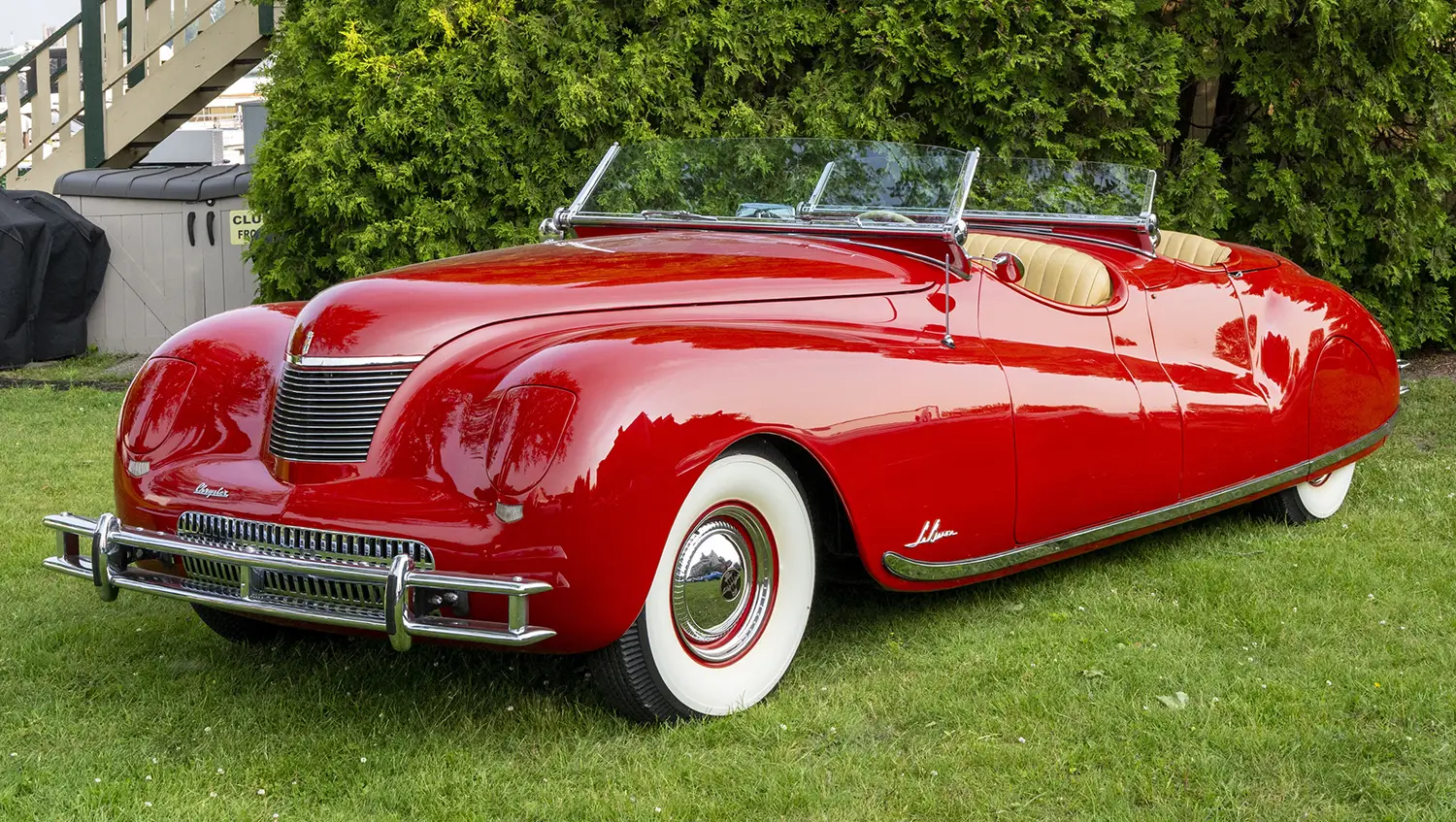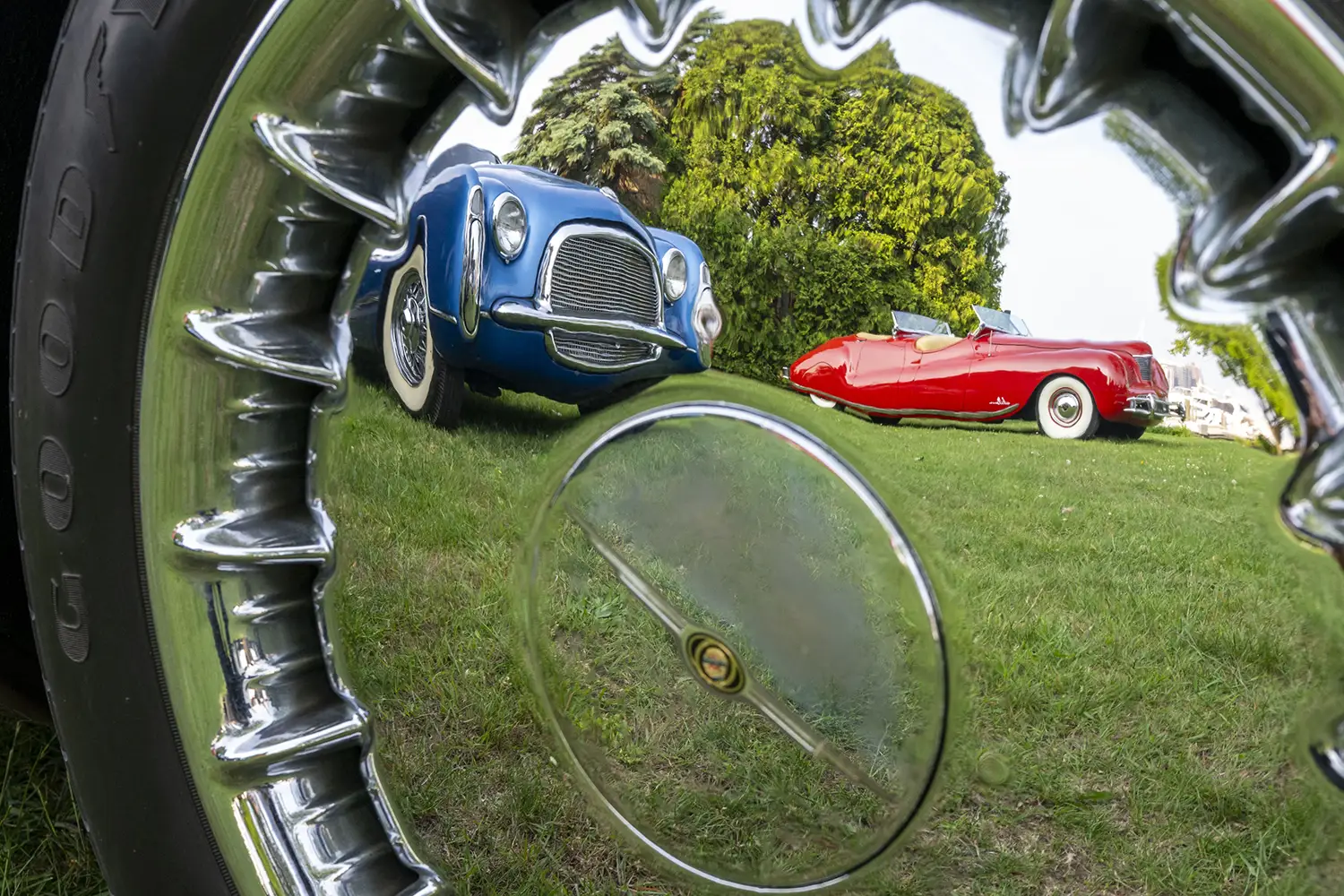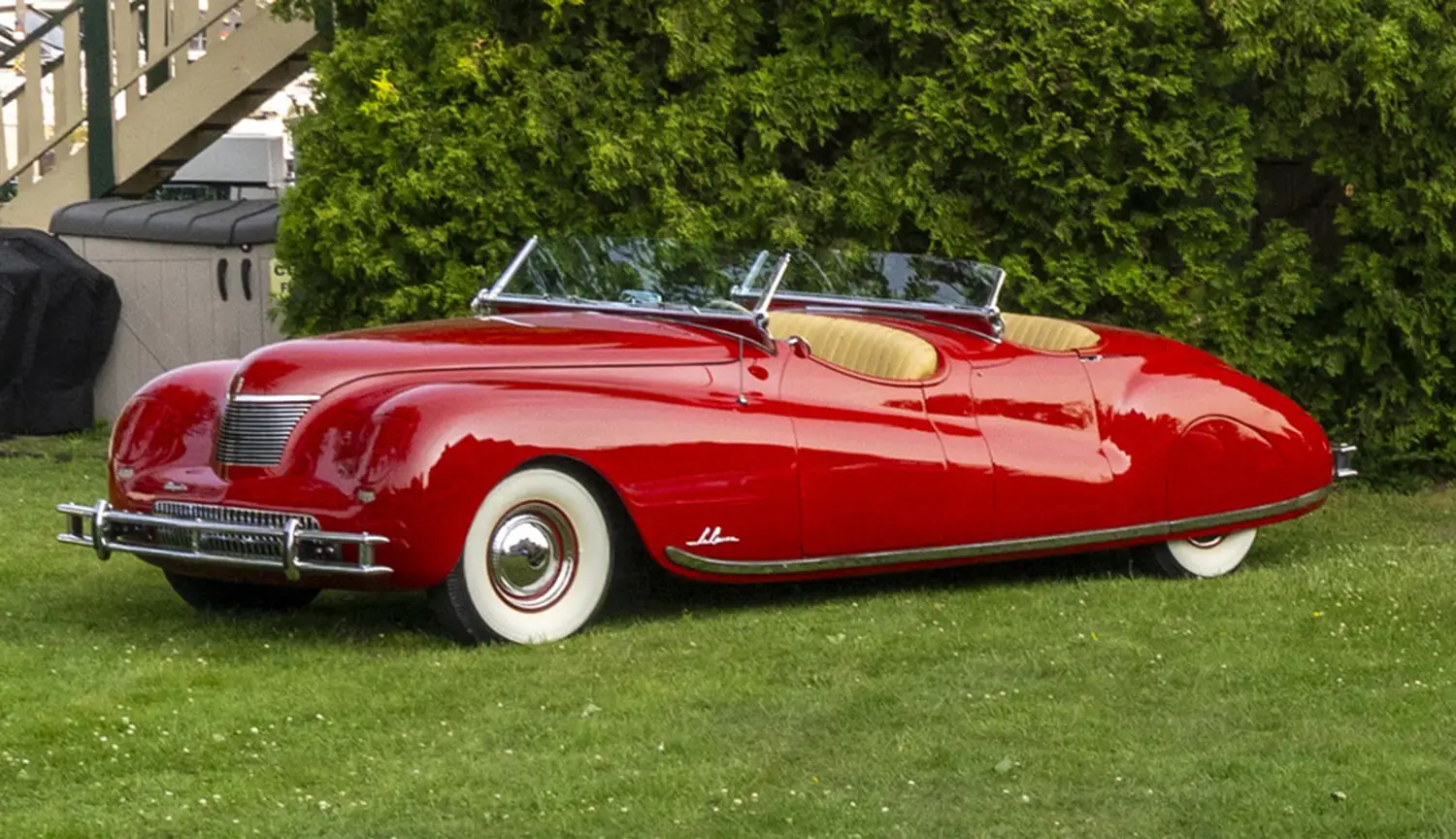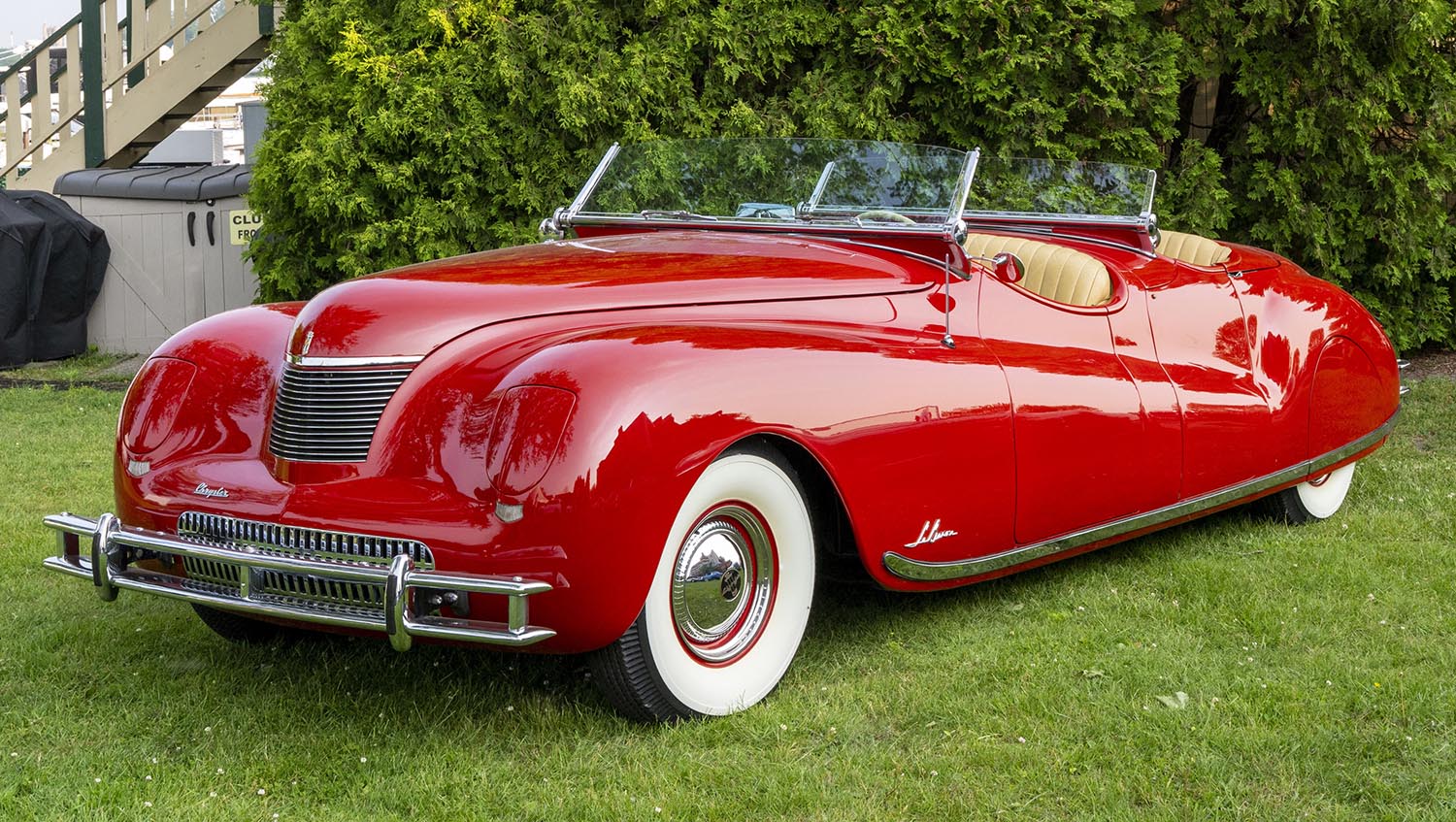
When you look at the 1941 Chrysler Newport Dual Cowl Phaeton, you are seeing more than just a car. You are seeing a statement made in aluminum and steel. This extremely rare machine was created at a crucial time for Chrysler Corporation. It served to showcase that the company was ready to deliver beauty and high-end design once again. After the controversial Airflow design of the mid-1930s, Chrysler needed a clear, undeniable win. Consequently, this concept car delivered that victory with grace and style, cementing its place as an auto icon.
Designing a Pre-War American Icon
The Newport Phaeton was the brainchild of Ralph Roberts. Roberts worked for LeBaron/Briggs Manufacturing Company. He was tasked with creating a car that could restore public confidence in Chrysler’s styling prowess. His design resurrected the dual-cowl phaeton body style. This style had essentially disappeared from the American market a decade prior. Furthermore, he infused it with a smooth, aircraft-inspired sense of streamlining. This look was a bold departure, perfectly capturing the optimistic spirit of the early 1940s.
Dual-Cowl Phaeton Heritage
The dual-cowl phaeton body style itself carries a deep heritage. It represents the height of open-air luxury from the classic era. The term refers to a four-door convertible with two separate passenger compartments. Each compartment has its own folding windshield or cowl. This unique configuration gave the rear passengers a sense of seclusion and drama. The 1941 Chrysler Newport brought this aristocratic style into the modern, pre-war design aesthetic.

Coachbuilt Luxury and Rarity of the 1941 Chrysler Newport
The 1941 Chrysler Newport was not a mass-production vehicle. LeBaron custom-built only a handful of examples. Sources suggest between five and six cars were originally constructed. This extreme rarity makes each surviving Newport an automotive treasure. The construction featured an all-aluminum body. The meticulous coachbuilt craftsmanship was obvious in every flowing line. This level of exclusivity immediately positioned the car at the very top of the market. Celebrated figures, including actress Lana Turner, were among the lucky few owners.
Forward-Thinking Design and Technology
The Newport introduced several forward-thinking features for its time. Designers included electro-hydraulic doors and power windows. Additionally, the car featured flush-fitting, retractable headlights. These details gave the Newport a distinctly futuristic look. It shared this advanced design philosophy with its equally exclusive stablemate, the Chrysler Thunderbolt. The interior was finished with bespoke aluminum dashboards and luxurious leather. Therefore, the Newport proved Chrysler was technologically capable and stylistically daring.
The Special Pace Car of the Indianapolis 500
One of the Newport’s most famous moments came in 1941. A unique example of the car was selected to pace the Indianapolis 500 race. Interestingly, this pace car was the only one built without the signature hidden headlights. This distinction made it visually unique from the other examples. Walter P. Chrysler Jr. personally took ownership of this special chassis after the race. It cemented a powerful link between the Newport and American motorsports heritage.
Powering the 1941 Chrysler Newport
The magnificent styling was matched by substantial engineering under the hood. The 1941 Chrysler Newport Phaeton was powered by the potent 323.5 cubic inch (5.3 L) Chrysler Spitfire straight-eight engine. This engine was factory-equipped with dual carburetors. It delivered approximately 143 horsepower at 3,400 rpm. This robust power plant was coupled with a three-speed manual transmission. Some models featured a three-speed Vacamatic transmission with overdrive. The engine was mounted on the sturdy Chrysler Imperial Crown chassis. This gave the Newport a solid foundation for its performance and road presence.
This magnificent machine was a landmark achievement. The 1941 Chrysler Newport Dual Cowl Phaeton proved that bold, hand-built artistry still had a place in the American automotive landscape. It remains a rolling sculpture, a fleeting pre-war dream that continues to inspire.
Disclaimer: Content on this site is for informational purposes only. Vehicle specs, pricing, and availability may change. Always verify details with official sources before making decisions. Opinions are those of the authors.
Source: Stellantis

